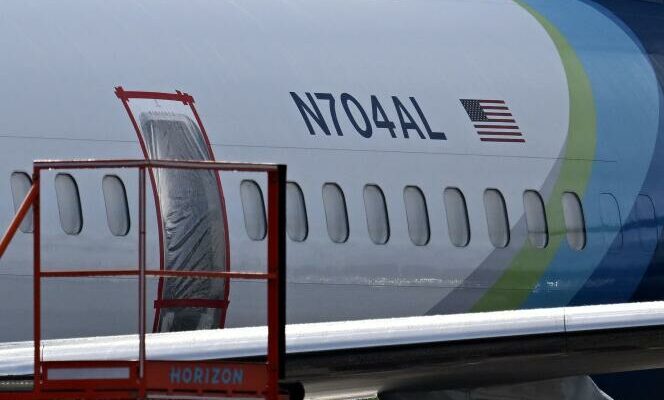The plane’s cap holder was simply missing four bolts. The rumor had been circulating for a few days, it was confirmed on Tuesday February 6 by the provisional investigation by the American authorities, led by the National Transport Safety Board, NTSB. The Alaska Airlines Boeing 737 MAX 9, of which a “plug” replacing a possible additional door flew into the air on Friday January 5, left the Boeing factories without its bolts. The proof was that there were no signs of tearing where these famous bolts should have been. “The types of damage observed and the absence of contact damage or deformation around the holes associated with the stop bolts [de la porte] indicate that four bolts (…) were missing”, writes the NTSB in its 19-page preliminary report.
Both the fuselage and door plug were produced by Spirit AeroSystems, a former Boeing subsidiary located in Kansas. The assembly arrived by train at the Boeing factory in Renton, Seattle, on August 31. The next day, Boeing repaired five damaged rivets with one of its subcontractors, which required the removal of the false door and its bolts. The NTSB does not say who removed the bolts, but it provides evidence that they were not put back in their proper place, producing a photo of the fake door, missing three of its bolts – the location of the fourth no. is not visible in the photo -, before the interior trim of the plane was restored.
The photo was part of a text message sent between Boeing employees on September 19, 2023, which “discussed interior restoration after rivet retouching was completed”, the report says. The plane was delivered to Alaska Airlines in late October. The quality of the closure, weighing 28.5 kilograms and manufactured in March 2023 in Malaysia, is not in question, as is the work of installing Wi-Fi in Oklahoma City, after delivery of the aircraft at Alaska Airlines. The accident is all the more devastating for Boeing because it is understandable to everyone and worthy of disaster films.
Furious customers
“Whatever the final conclusions, Boeing is responsible for what happenedsaid David Calhoun, the company’s CEO. An event like this should not happen on an aircraft leaving our factory. » As early as January 31, during the presentation of the aircraft manufacturer’s annual results, Mr. Calhoun recognized his company’s responsibility. “We caused the problem. Over the past few weeks, I’ve had difficult conversations with our customers, with our regulators, with congressional leaders and more. We understand why they are angry and we will work to earn their trust”Mr. Calhoun told financial analysts.
You have 45% of this article left to read. The rest is reserved for subscribers.
